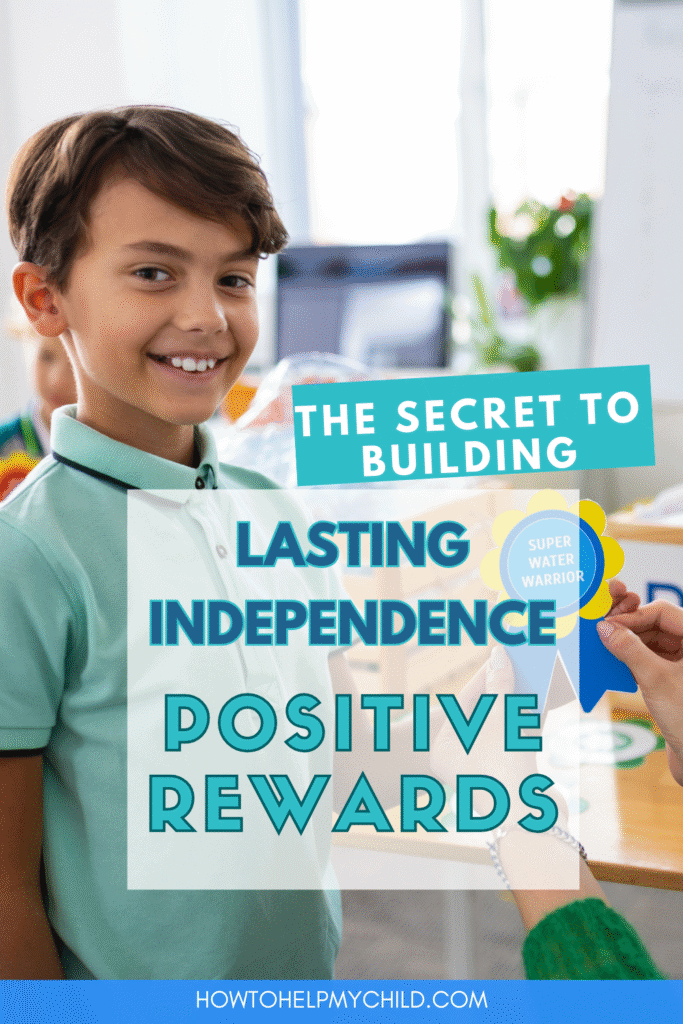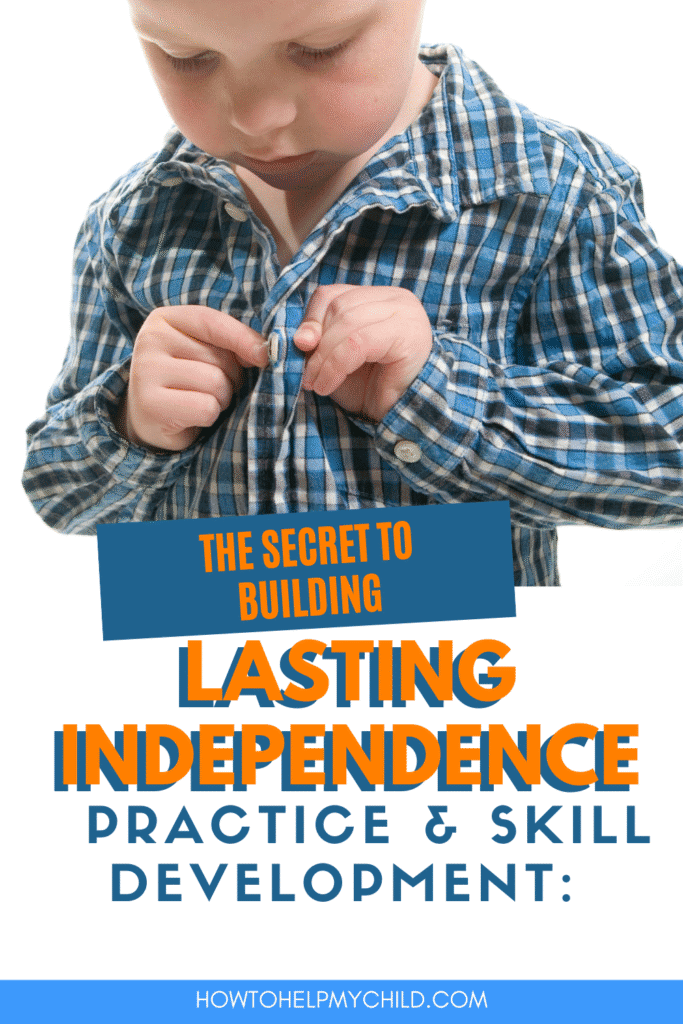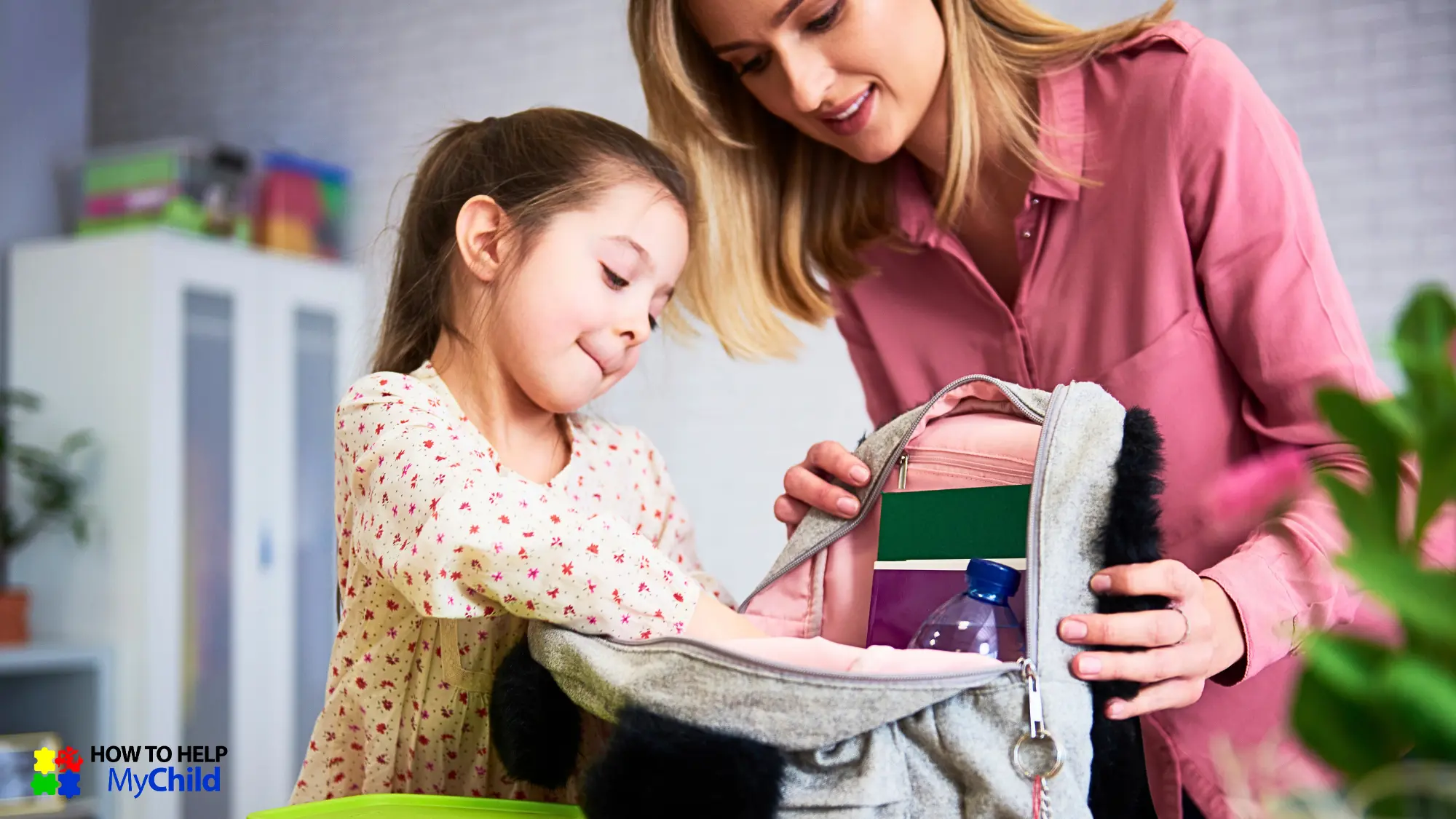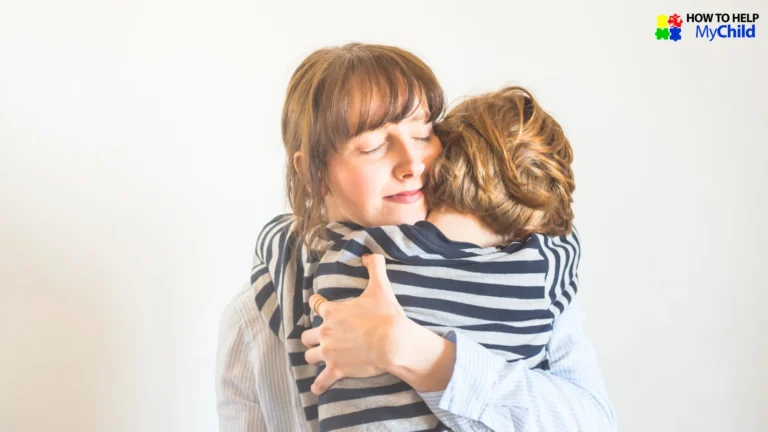How to Build Independence in ADHD Child Without Power Struggles or Meltdowns
Reduce daily overwhelm and empower your neurodivergent child one step at a time.
If you’re raising a child with autism or ADHD, you’re probably juggling more than most people see.
Mornings can feel like battlegrounds.
Transitions bring meltdowns.
Even brushing teeth can sometimes spark more drama than you ever thought possible.
You do so much, not because you want to control every moment, but because it’s easier, faster, and safer than risking another spiral.
But here’s the truth I want you to hear today:
The more your child builds independence, the less overwhelmed they feel.
The more predictable their day becomes, the safer their nervous system feels.
The more confident they feel … the fewer meltdowns you’ll see.
This is the shift that changes everything.
Quietly.
Gradually.
Powerfully.
And yes Mom, you can absolutely get there.
📺 Prefer to watch instead? Check out the video here:
Why Building Independence in ADHD and Autistic Kids Matters

Independence isn’t just a milestone. It’s a lifeline for neurodiverse children.
For kids with ADHD or autism, building independent skills boosts confidence, reduces anxiety, and helps them feel more in control of their world.
When they feel more in control?
The frequency and intensity of meltdowns start to go down.
Meltdowns aren’t just about big emotions, they’re often the result of overwhelm, uncertainty, and your child’s body feeling stuck.
Mastering daily tasks, even small ones like packing a bag or brushing teeth, gives your child a sense of pride and predictability.
Their nervous system feels safer.
Their brain feels calmer.
And those everyday battles that used to feel unavoidable?
They start to soften.
And mama, this matters for you, too.
The more your child can do independently, even with support, the less stress you’re carrying.
The fewer fires you’re putting out.
Which means more space for you to breathe, recharge, and show up as the mom you want to be, not just the one who’s hanging on by a thread.
Yes, the road to independence might include challenges – sensory sensitivities, communication struggles, executive functioning delays – but you’re not doing it alone.
With the right tools and steady support, you can build a more peaceful, connected rhythm at home where everyone thrives.
7 Ways to Help Your ADHD or Autistic Child Build Independence
How do you help your child with autism or ADHD gain independence and decrease the frequency and intensity of Meltdowns?
Let’s explore seven effective strategies:
1. Use Visual Supports to Create Predictable Routines
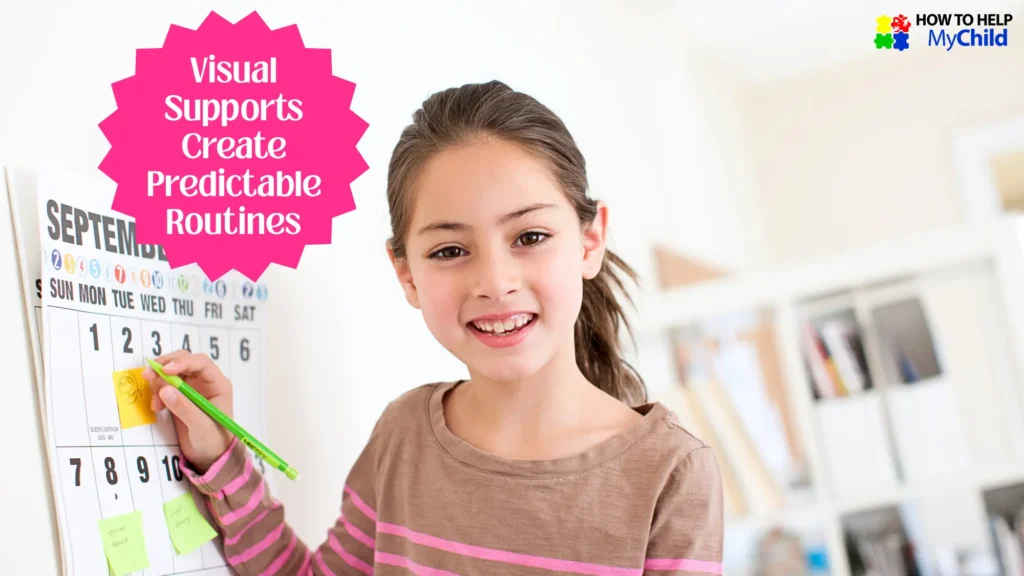
Visual aids create calm through clarity.
They give structure and take the guesswork out of routines to help your child know what’s coming next, without needing a thousand verbal reminders.
Visual supports can include charts, routine cards, schedules, and social stories.
They aren’t just “nice to have.”
For our children with autism or ADHD, they’re essential tools that bring structure and predictability to their world that often feels confusing or overwhelming.
When your child can see what’s coming next, it eases the mental load and quiets the anxiety that often leads to meltdowns.
They make transitions feel safer and more manageable.
Visual tools create a sense of safety and are a way for your child to make sense of their day, feel more in control, and navigate transitions with greater confidence.
Unlike verbal instructions which can be hard to process in moments of stress, visual aids give your child a calm, consistent roadmap they can return to again and again.
Visuals are game changers for building independence in our neurodivergent kids.
Creating a Morning Routine Chart
Here’s how to create a morning routine chart:
- Identify the Tasks: Wake up, get dressed, brush teeth, eat breakfast, pack lunch, shoes on, school.
- Use Pictures or Symbols: Real photos or clipart for each task.
- Make it Moveable: Let your child move each item to a “done” column or velcro board.
- Keep it Visible: Post it where your child gets ready each day.
Here’s an example of a morning routine:
- Wake up
- Get dressed
- Brush teeth
- Make bed
- Put clothes on
- Eat breakfast
- Put lunch in their school bag
- Go to school
Beyond Mornings: Other Visual Supports
Visual aids aren’t just for mornings. Here are some other situations where they can be helpful:
- Bedtime Routines: A visual chart can help your child wind down and prepare for sleep.
- Completing Chores: Break down chores into manageable steps with visual cues.
- Personal Care: Manageable steps broken down for personal care – how to take a shower, how to wash your hand, going to the toilet.
💡TIP
Keep visuals where your child naturally looks, like on the fridge or their bedroom wall. Review them together each morning.
Preparing for Transitions: Use visual timers or “first/then” boards to ease transitions between activities.
- Visual schedules
- First-Then boards
- Picture based routines
Benefits and Implementation Tips
The benefits of visual aids are clear:
- Reduced Nagging: Visuals speak for themselves, eliminating the need for constant reminders.
- Increased Self Direction: You build independence in your ADHD child as they learn to follow the visual cues and manage their own tasks.
- Improved Understanding: Visuals clarify expectations, reducing confusion and frustration.
- Reduce Meltdowns: Predictability helps your child feel safe. When they feel safe, meltdowns become less frequent.
To introduce visual aids, start simple.
Explain how the chart or schedule works and be consistent in its use.
Celebrate successes and adjust as needed.
💛 From a Mom in Our Community:
“When we started using a morning chart with pictures, Ned’s meltdowns stopped. He just checked the chart and moved on to the next step. No more shouting or reminders! No more meltdowns!”
— Lisa, mom to 6 year old Ned with autism
2. Break Big Tasks Into Simple, Winnable Steps

Big tasks can feel massive for our children with ADHD or autism.
“Clean your room” might sound simple to us – but to our kids, it’s vague, unpredictable, and totally overwhelming.
That overwhelm often leads to frustration, which can spiral into a meltdown.
But when you break the task into small, clear steps (a strategy known as task decomposition), everything shifts.
Suddenly, when you break them down into tiny steps, they feel manageable.
The Power of Success (And Why It Matters)
When your child checks off a step, they’re learning something powerful: “I can do hard things – one step at a time.”
That sense of success calms the nervous system.
It builds independence and it makes meltdowns less likely because your child isn’t stuck in that paralyzing “I don’t know where to start” spiral.
💡TIP
When a child feels like they have some control, they don’t need to fight for it.
How to Break Down a Task (Without Overcomplicating It)
Keep it simple: Each step should feel achievable without your help.
Identify the goal: What exactly are you asking them to do?
List the steps: Break it down into bite-sized actions.
Create a checklist or visual: Use pictures or words, depending on your child’s needs.
Instead of “Clean your room,” try:
- Pick up toys and put them in the toy box.
- Put dirty clothes in the laundry basket.
- Line up books on the shelf.
- Pull the bed covers up.
- Take water glass to the kitchen.
You can even write or draw each step on a checklist, whiteboard, or visual chart. Let them tick it off as they go – every check is a win!
Why this helps with meltdowns:
Smaller steps = less overwhelm = fewer meltdowns.
Children with ADHD or autism often freeze or explode when tasks feel too big. Smaller steps = reduced overwhelm = smoother cooperation.
| Original Task | Broken-Down Steps |
|---|---|
| Getting ready for school | 1. Get dressed. 2. Eat breakfast. 3. Brush teeth. 4. Pack backpack. 5. Put on shoes. |
| Doing laundry | 1. Gather dirty clothes. 2. Put clothes in washing machine. 3. Add detergent. 4. Start machine. 5. Put clothes in dryer. 6. Fold clothes. 7. Put clothes away. |
This isn’t about lowering expectations.
It’s about making tasks doable.
And when your neurodiverse child feels capable instead of confused, the resistance softens, and the meltdowns begin to fade.
💛 From a Mom in Our Community:
“We laminated a checklist for each chore and let Mason tick them off with a whiteboard marker. He loves the success of checking off his finished task – it keeps him going!”
— Sarah, mom of Mason, age 8 with ADHD
3. Offer Choices to Build Confidence and Control
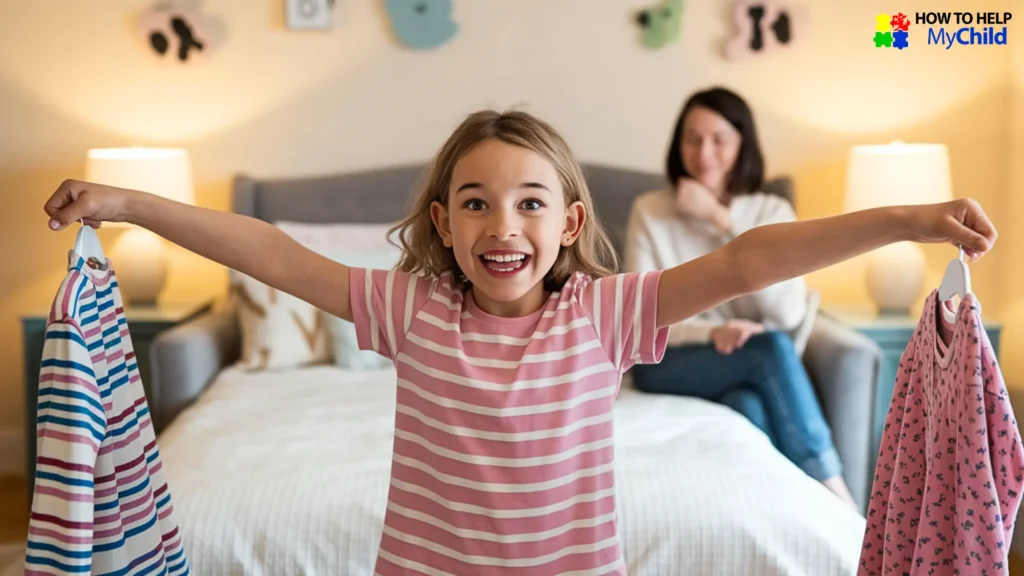
The Importance of Choice
Our kids with ADHD or autism, life often feels like it’s happening to them, not with them.
There’s unpredictability.
Noise.
Sensory overload.
Constant redirection.
It’s no wonder they crave control, and sometimes resist with all their might when they don’t have it.
That’s where choice becomes a powerful calming tool.
Even small decisions, like choosing which socks to wear or what fruit to pack in their lunch, can help your neurodivergent child feel more grounded, more in control, and less likely to spiral into overwhelm.
Why Choice Helps Reduce Meltdowns:
- Choice creates emotional safety. Your child knows they have a voice.
- Choice builds confidence. Making decisions and seeing the outcome, reinforces trust in themselves.
- Choice softens resistance. You’re not forcing – you’re inviting co-operation.
💛 From a Mom in Our Community:
“We used to fight every morning over what to wear. Now I just lay out two outfits and let Sally pick. No more power struggles and she feels like it’s her decision.”
— Katie, mom to 10 year old Sally with autism & ADHD
If Your Child Struggles to Choose…
Some kids freeze up when faced with choices, especially if they’re not used to having any.
Sometimes, your child may hesitate to make choices because they lack confidence or fear making the wrong decision.
Your support can make a big difference!
Start small.
Celebrate the decision no matter what they pick.
If needed, gently guide them:
“You’re having a hard time deciding today. That’s okay, how about we pick this one together?”
Over time, those tiny choices become building blocks of self-esteem, confidence, and emotional regulation.
💡TIP
Stick to two or three options max. Too many choices can mean overwhelm.
Offering choices empowers your neurodiverse child and promotes a sense of control.
Children with autism and ADHD often experience a world that feels unpredictable and overwhelming.
Giving them opportunities to make choices, even small ones, helps them feel more secure and confident.
Creating Opportunities for Choice to Build Independence Without the Power Struggles
Keep it simple, and use choices throughout the day:
- What to wear:
“Do you want the dinosaur shirt or the red hoodie?” - What to eat:
“Would you like an apple or a banana for your snack?” - What to do next:
“Do you want to start with math or writing?”
Offer limited and manageable choices to avoid overwhelming your child.
Building Confidence and Self-Esteem
Every time your child makes a choice, they’re building confidence and self esteem.
Praise their decision making skills and let them know you trust their judgment.
Your encouragement is essential!

You’re Not Alone – Find Your Support System Here!
Parenting a child with autism or ADHD can feel isolating—endless meltdowns, sleepless nights, & feeling like no one understands But you don’t have to do this alone.
❣️Get real-life strategies to handle daily challenges.
❣️Connect with moms who get it—no judgment, just support.
❣️Share your wins (and struggles)
❣️Find encouragement, advice, & a place to vent when you need it most.
👉Join our private Facebook group today and step into a community that truly understands!
4. Use Positive Reinforcement and Rewards to Build Independence – Without Bribes or Battles
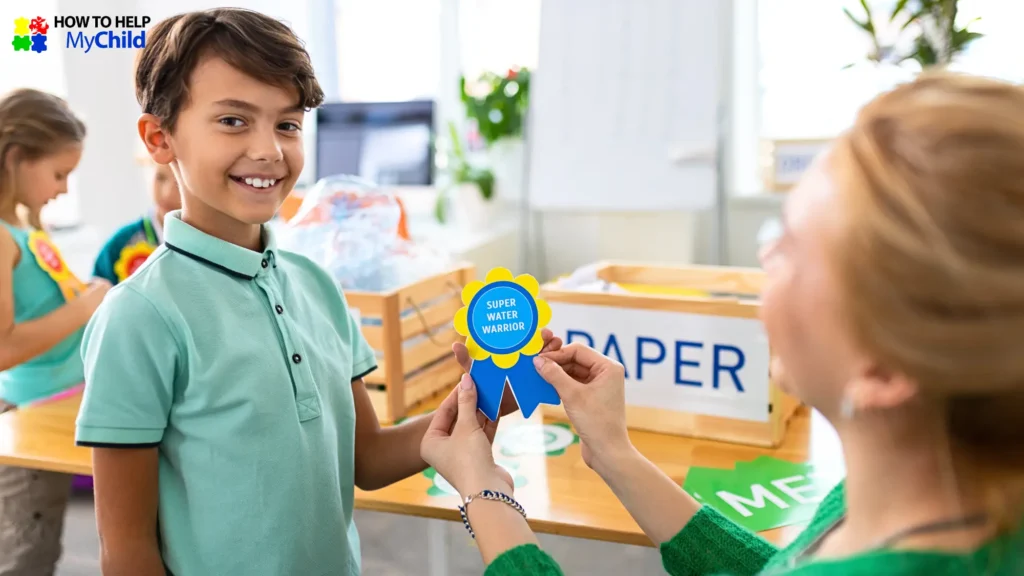
The Power of Positive Reinforcement
Positive reinforcement is a powerful tool for motivating children with autism and ADHD.
It involves focusing on desired behaviors and rewarding them when they occur. When you catch your child doing something right, praise them!
When it comes to how to build independence in an ADHD child, positive reinforcement is one of the most effective and overlooked tools.
Here’s why Positive Reinforcement matters:
Kids with ADHD or autism are often told what not to do.
What your child needs more of?
Recognition for the things they are doing right.
And when we focus on catching those moments, no matter how small, we’re not just shaping behavior.
We’re building motivation, confidence, and trust.
Why Positive Reinforcement Works So Well:
- It builds your autistic child’s self-esteem. They feel seen, valued, and capable.
- It helps your child with ADHD connect effort with success. This is especially important for kids who struggle with attention or emotional regulation.
- It encourages independence. When your child knows what gets positive attention, they’re more likely to do it again – on their own.
In other words? It’s a powerful, brain friendly way to reduce meltdowns and increase independence.
💡TIP
Every time your child completes a small step, their brain gets a little dopamine boost – that “feel-good” chemical that fuels motivation. The more they succeed in tiny ways, the more confident and cooperative they become. Small wins aren’t just wins, they’re wiring your child’s brain for future success.
Types of Rewards That Actually Work:
Not all rewards have to be flashy or expensive.
The best ones are meaningful to your child.
- Praise
“I saw how you packed your bag all by yourself – amazing!” - Tangible rewards
Stickers, a small toy, or a token for a bigger prize - Privileges
Extra screen time, a trip to the park, or choosing the family movie
Rotate rewards occasionally to keep things interesting, but stay consistent long enough for your child to link the behavior to the reward.
Tips for Success:
- Be specific with your praise.
Instead of “Good job,” try “I love how you remembered to brush your teeth without me asking.” - Reward immediately.
Kids with ADHD need instant feedback. The quicker the reward, the stronger the connection. - Focus on effort, not perfection.
“You tried really hard to stay focused – that matters!” - Use visual trackers.
Charts, token jars, or goal cards give your child a visual reminder of their progress. - Always be truthful.
Your child will see through any fake or false rewards. Comment on the effort that you see.
Positive reinforcement isn’t just a “nice to have” it’s a research backed method for how to build independence in ADHD children.
And when kids feel proud of their own progress?
That’s when the real magic happens.
5. Practice and Skill Development: The Secret to Building Lasting Independence
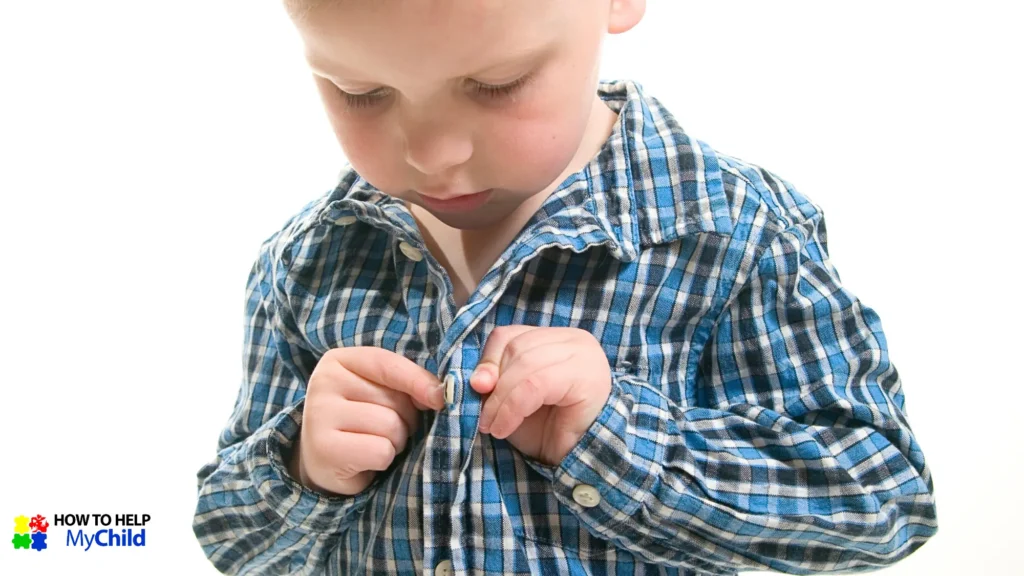
If you’re wondering how to build independence in an ADHD child without constant reminders or meltdowns, here’s the secret: practice matters more than perfection.
Skills don’t stick after being taught once.
They need to be practiced – in low pressure moments, across different settings, and with loads of encouragement.
Why Practice Works for Neurodivergent Kids:
Children with autism or ADHD often need repetition, consistency, and safe feedback loops in order to master independent tasks.
Practicing in bite sized ways builds confidence and reduces anxiety.
These two things will naturally lower the risk of meltdowns.
Start with a Safe, Supportive Environment
Before your neurodiverse child can learn, they need to feel safe enough to try.
- Let them know it’s okay to make mistakes.
- Focus on progress, not perfection.
- Keep your tone warm and patient, even when you’re repeating yourself.
Try saying:
“This is something we’re going to practice together. It doesn’t have to be perfect, I just want you to feel proud of trying.”
Create a Practice Checklist
Checklists give structure to new routines. Try using them for:
- Morning tasks
- Getting ready for school
- Packing a bag
- Homework routines
- Social or self-care skills (like joining a group or brushing hair)
Include visuals or step by step instructions.
Let your child tick off tasks or move velcro cards to a done column – that little dopamine hit builds motivation!
Use Role Play, Games & Real Life Moments to Build Independence
Our spicy kids learn best through play and hands on experience.
Look for natural opportunities to practice independence:
- Role-play ordering at a restaurant, talking on the phone or asking for help
- Play-based practice for dressing, cleaning, or transitions
- Real-life reps like prepping lunch, setting the table, or choosing clothes
Make it fun. Keep the stakes low. Cheer them on even when it’s messy.
Practice in Different Settings to Generalize Skills
One of the biggest challenges in how to build independence in an ADHD child is generalization and applying skills in multiple places, not just at home.
Your child might brush their teeth independently in the bathroom, but need help remembering at grandma’s house.
How to support this:
Celebrate when they do it “on their own” – no matter where it happens
Practice the same task in new environments
Gradually reduce supports (like timers or prompts)
School Support
Once your child starts mastering a skill at home, loop in teachers, aides, or therapists so they can reinforce the same skills at school.
Consistency between home and school is key.
Share with school, checklists or routine visuals you’re using at home
Ask what supports are working in the classroom and implement them at home too!
When we keep communication open between home, school and therapy, your child will feel safe and supported everywhere.
💛 From a Mom in Our Community:
“We practiced ‘asking for help’ at home through role play, and then emailed the teacher to use the same script. Within a week, my daughter was raising her hand and we were meltdown-free.”
— Tara, mom of 9 year old Amelia with ADHD and autism
The more you practice independence in safe, supported ways, the more confident your child will become and the fewer meltdowns you’ll both face.
That’s the foundation of how to build independence in an ADHD child – repetition, encouragement, and tiny wins that build over time.
6. Increase Independence One Step at a Time
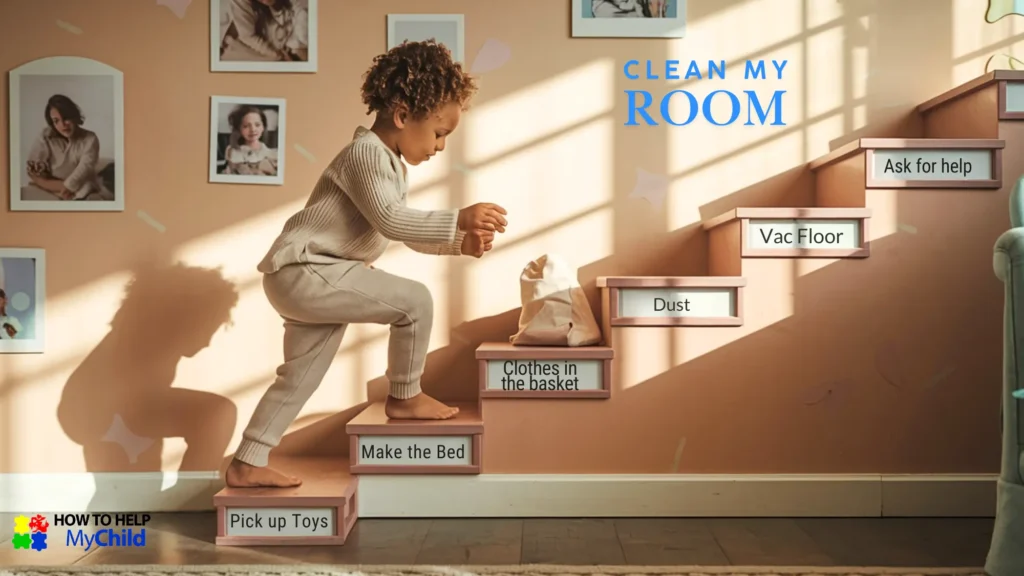
When you’re exploring how to build independence in an ADHD child, one of the most important things to remember is this: it’s a marathon, not a sprint.
You don’t have to do it all at once, and neither does your child.
Don’t expect your child to become fully independent overnight.
Gradually increase their level of independence and responsibility as they become more capable and confident.
Avoid overwhelming them with too much too soon.
When you’re exploring how to build independence in an ADHD child, one of the most important things to remember is this: it’s a marathon, not a sprint.
You don’t have to do it all at once, and neither does your child.
Pushing for too much, too fast can backfire.
It leads to overwhelm, anxiety, and often – meltdowns.
But when you gradually increase your child’s responsibilities in a way that feels safe and supportive, you set them up for success.
Look for Signs of Readiness
Start by observing your child’s current skills.
Are there things they’re already doing with partial support – like brushing their teeth while you supervise, or packing their bag when you remind them what goes in?
These almost there moments are golden opportunities to encourage more independence.
Remember to check in with your child, too.
Ask how they feel about trying something new on their own.
When our kids feel included in the decision, they’re far more likely to co operate and feel proud of the outcome.
Use a Step by Step Approach to Independence
Once you identify a task your child is ready to take on, don’t hand over the whole thing at once.
Instead, break it into small, doable parts, just like you’d do when teaching anything new.
For example, let’s say you’re working on independence around the bedtime routine.
You might start by having your child pick out their pajamas, while you still lead the rest. Then, next week, they also brush their teeth on their own. Slowly, you fade your help as they gain confidence.
This scaffolding approach, provides support as needed, then slowly removing it is one of the most effective ways to build true, lasting independence.
Celebrate the Little Wins
Every time your child takes a new step on their own, pause to recognize it.
Even if it wasn’t perfect. Even if they needed a little nudge.
Because the goal isn’t perfection — it’s progress.
Praise their effort:
“You remembered to zip your backpack all by yourself — that’s awesome!”
Or highlight their bravery:
“You tried it on your own, even though it was tricky. That’s what independence looks like.”
These small moments of positive reinforcement go a long way in helping your child feel capable and proud, and that, in turn, motivates them to keep growing.
7. Expect Setbacks, and Keep Going
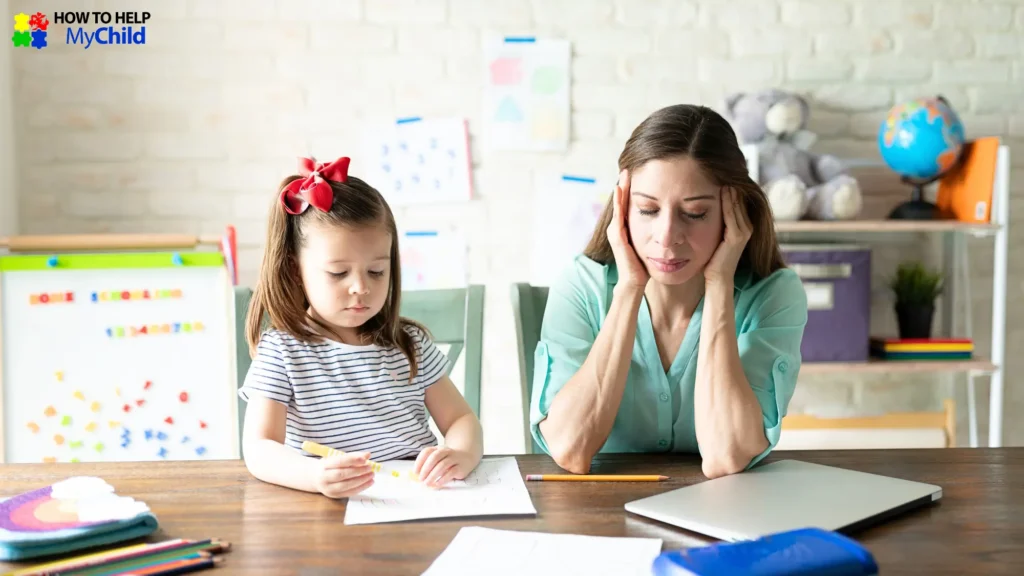
The Importance of Patience and The Power of Consistency
f you’re wondering how to build independence in an ADHD child, here’s something that might not show up on the Pinterest charts or behavior plans, but it’s everything:
Patience.
And consistency.
Building independence in a neurodivergent child isn’t linear.
One day they might brush their teeth, get dressed, and pack their bag without help.
Then the next day, they might need support with every step.
That’s not failure. That’s how growth works.
Progress Takes Time and That’s Okay
For our children with autism or ADHD, mastering even small daily routines can take repetition, emotional support, and lots of practice.
You might feel like you’ve explained the same thing a hundred times. Sometimes, you have!
But every repetition is laying a foundation.
Every try,even if it doesn’t go perfectly, is helping your neurodivergent child’s brain wire in a new skill.
Stay with it.
Slow is not the same as stuck.
Keep Things Predictable and Clear
Consistency gives your child emotional safety.
When you set clear expectations and stick to them, whether it’s around the bedtime routine, screen time limits, or how they ask for help, your child learns that the world is a bit more predictable.
It is this predictability that reduces anxiety, which also reduces meltdowns.
That’s why consistency is such a key part of how to build independence in ADHD child.
It helps their nervous system feel safe enough to try new things without spiraling.
💛 From a Mom in Our Community:
“Once we started using the same bedtime chart every night, things clicked. It took two weeks, but now Justin follows it with barely any prompting. I just had to keep showing up the same way.”
— Melissa, mom to 10 year old Justin with autism
Celebrate Effort (Even on the Hard Days)
Progress isn’t always obvious – but it’s happening.
That deep breath your child took before getting frustrated?
That counts.
The moment they tried to zip their coat themselves before asking for help?
That’s growth.
Let them know you see it.
“You’re working so hard at this.”
“I love how you kept going, even when it was tricky.”
“You’re getting more independent every day.”
Your words are powerful Mom.
They remind your child they’re not alone, and they fuel the courage they need to try again tomorrow.
Addressing Common Challenges
Even when you’re using all the right tools to support your child’s independence, the road won’t always be smooth.
That doesn’t mean you’re doing anything wrong.
It just means your child is learning.
Here’s how to navigate some of the most common bumps along the way:
- Resistance to Change: Prepare your child in advance for changes and use visual supports.
- Communication Difficulties: Use clear and simple language and visual aids.
- Sensory Sensitivities: Provide a quiet space or adjust lighting and noise levels.
- Meltdowns and Tantrums: Stay calm, provide reassurance, and avoid power struggles. Remember, meltdowns are often a sign of overwhelm or frustration.
Seeking Professional Support
You don’t have to figure this all out alone.
If you’re feeling stuck or your autistic or ADHD child’s challenges feel bigger than what you can handle right now, reaching out for professional help is a loving, proactive step.
Support that helps:
- Occupational therapists (for sensory tools and routines)
- Speech therapists (for communication challenges)
- Behavioral therapists or coaches (for step by step life skills)
- Parent groups (because you need support, too).
Final Thoughts on Raising Independent Neurodiverse Kids

Helping your child with autism or ADHD gain independence is a journey.
It requires patience, consistency, and positive reinforcement.
By using visual aids, breaking down tasks, encouraging choices, and providing ample opportunities for practice, you can empower your child to thrive.
Independence isn’t about expecting your child to do everything on their own.
It’s about building just enough structure, support, and choice so they can succeed, and feel safe doing it.
When they feel safe, confident, and in control…
You’ll see fewer meltdowns.
You’ll have less stress.
And you’ll both have more space to breathe.
You’ve got this.
And I’ve got you.
Take care,
Sue
🍃💖🍃

Love to pin? Share the love on Pinterest …
